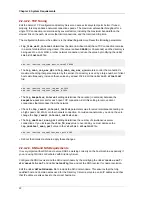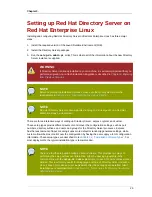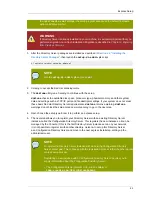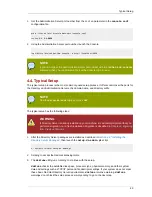
Chapter 3. Setting up Red Hat Directory Server on Red Hat Enterprise Linux
36
11. Enter the Directory Server port number. The default is
389
, but if that port is in use, the
setup
program supplies a randomly generated one.
Directory server network port [389]: 1066
12. Enter the Directory Server identifier; this defaults to the hostname.
Directory server identifier [example]:
13. Enter the directory suffix. This defaults to
dc=
domain name
. For example:
Suffix [dc=redhat, dc=com]:
14. Set the Directory Manager username. The default is
cn=Directory Manager
.
15. Set the Directory Manager password and confirm it.
16. Select whether you want to install sample entries with the Directory Server instance. This means
that an example LDIF, with preconfigured users, groups, roles, and other entries, is imported into
the Directory Server database. This option is helpful for evaluation or testing Directory Server
features.
This is not required.
17. Select whether to populate the Directory Server with data; this means whether to import an LDIF
file with existing data into the Directory Server database. If the answer is yes, then supply a path
to the LDIF file or select the suggested file. If the LDIF file requires custom schema, perform a
silent setup instead, and use the
SchemaFile
directive in the
.inf
to specify additional schema
files. See
Section 6.3.5.1, “.inf File Directives”
for information on
.inf
directives.
The default option is
none
, which does not import any data.
18. Enter the Administration Server port number. The default is
9830
, but if that port is in use, the
setup
program supplies a randomly generated one.
Administration port [9830]:
19. Set an IP address for the new Administration Server to use. The Administration Server uses
a web server, and this parameter is set in the
console.conf
file for the server. Setting this
parameter restricts the Administration Server to that single IP. Leaving it blank, the default, allows
the Administration Server to acquire any IP address.
20. Set the user as which the Administration Server process will run. The default is
nobody
. For
example:
Run Administration Server as [nobody]:
















































